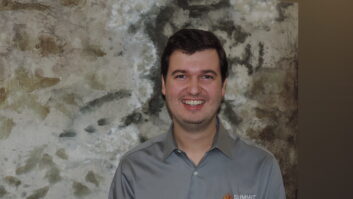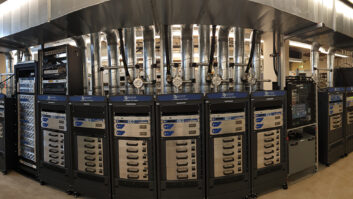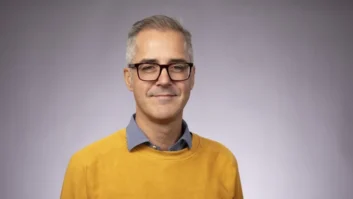
GENEVA — The European Broadcasting Union, established on Feb. 12 1950, comprises 73 active members in 56 countries, and 21 associate members from Asia, Africa and both North and Latin America.
With its members running more than 780 TV and 1040 radio services and broadcasting in 123 languages to a potential audience of 1.03 billion people, the EBU aims to support and strengthen public service media through an interchange of media services, training and knowledge sharing.
The EBU, with a privileged point of view on the latest trends in the business and on the most promising technology developments, sees news production from the field becoming increasingly mobile.
MORE MOBILITY
Francesca Matera, EBU radio news producer explains that 3G and 4G mobile data connections are widely adopted by EBU members to broadcast from the field, and that journalists are using more mobile devices for live reporting and recorded contributions.
“Traditional broadcast devices are still the top option when broadcasters have both the time and the resources to bring traditional equipment with them,” she says. “However, when a breaking news event occurs, or when broadcasting from remote locations, EBU member journalists are progressively using mobile phones, because it’s easy, they already have it with them, and it’s quick — they can be live within minutes.”
With remote contribution tools transitioning from hardware to software solutions, the availability of forward-looking content management platforms where a smartphone is the main player are becoming more common. Today, many of these platforms have a hardware-agnostic approach, with a specific version for any mobile OS.
“4G is clearly the way forward,” said Matera. There is still a lot to be explored in terms of what one can do with this kind of connection. You can’t expect to have 4G coverage in the middle of the desert, but anywhere else it will probably be the solution.”

In her opinion, the development of in-house smartphone applications is gaining momentum. Matera mentions the Luci Live app, “which offers very good customization possibilities: some of our members from both Central and Northern Europe developed their proprietary version of the Luci Live app to best fit their specific requirements,” Matera adds.
According to Matera, traditional satellite communication is still too expensive for radio purposes. The EBU did not test Ka Band satellite communication because it has to focus on worldwide connectivity, and the spectrum licensed for Ka Band transmissions is not the same all over the world. Therefore more than one device may be needed while travelling across various countries.
LATENCY
Latency has always been a key point in any live contribution link, especially when a true interaction between the reporter and the studio is required. “One of the major cons when broadcasting live from remote through a 3G as well as a 4G connection is latency,” said Matera. “We tested a product that can improve the performance of a remote 3G broadcast.”
This tool comprises a portable device capable of routing the same audio packets through multiple paths using a method known as “diversity,” for the purpose of minimizing latency. Instead of bonding multiple connections to improve the overall bandwidth, when used for audio purposes, this device trades bandwidth for the lowest possible latency.
“We have tested this product on various occasions and found that it’s very light and easy to use. It can use up to four SIM cards. It worked quite well,” Matera continues.
As for the opportunity for radio stations to produce more and more live news, in Matera’s opinion today’s audience is often overwhelmed by too much information from many different sources.
“There is a lot of information available, but it’s sometimes difficult to know which one to trust,” she said. “Having your own person there, on-site, definitely adds quality, trust and reliability to one’s broadcast. Secondly, reporting from the field sounds completely different from a reporter at the studio. It sounds better, it’s truly covering 360 degrees, it gives you a sound experience that is completely different.”
This allows the on-site reporter to provide contributions for other media such as the Web or social sites in addition to radio. Journalists on-site can also more easily tell a story through different eyes, enriching their reports with voice and testimonials, in addition to the ones provided for them by news agencies and social media.












